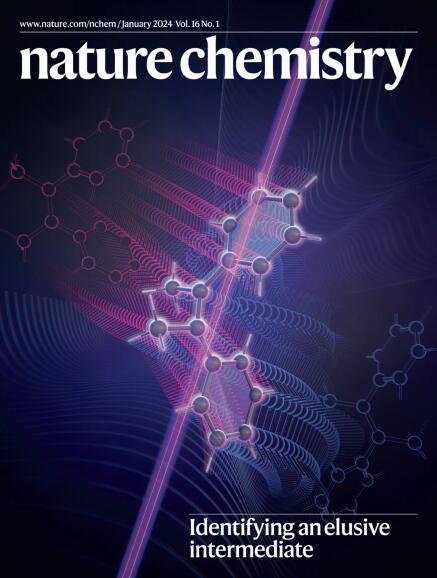Secondary nucleation as a strategy towards hierarchically organized mesoscale topologies in supramolecular polymerization
IF 19.2
1区 化学
Q1 CHEMISTRY, MULTIDISCIPLINARY
引用次数: 0
Abstract
Developing new generic methodologies for organizing molecules into nano- to mesoscale structures of precise shapes and sizes is a research topic at the forefront of modern chemistry. Creating hierarchical molecular assembly, especially at the mesoscale, is important to realize functions reminiscent of those manifested by biomolecular assemblies in the mesoscopic regime. However, this is challenging due to the difficulty in maintaining stringent controllability over the organization of molecules at higher hierarchical levels, wherein weak non-directional intermolecular interactions rather than strong directional interactions typically play a predominant role. Recent studies have revealed that secondary nucleation, often experienced by one-dimensional assemblies such as supramolecular polymers that grow with spontaneous nucleation, is effective in the hierarchical construction of higher-order structures. Here we illustrate how secondary nucleation can be combined with the well-established precision synthesis of supramolecular polymers to realize precise control over hierarchical structures in the mesoscopic regime. We present a roadmap for creating hierarchical supramolecular polymers by exploiting secondary nucleation–elongation processes and discuss future prospects for the field. Mastering the synthesis of hierarchical molecular assemblies at the mesoscale—mimicking the precision of biomolecular assembly—has been challenging due to the lack of well-defined methodologies for controlling non-covalent interactions at multiple levels. In this Review, secondary nucleation is presented as a promising strategy for constructing mesoscale hierarchical structures.


在超分子聚合中,二级成核作为分层组织的中尺度拓扑策略
开发新的通用方法将分子组织成精确形状和大小的纳米到中尺度结构是现代化学的前沿研究课题。创建分层的分子组装,特别是在中观尺度上,对于实现与生物分子组装在中观体系中表现出来的功能相似的功能是重要的。然而,这是具有挑战性的,因为很难在更高层次的分子组织中保持严格的可控性,其中弱的非定向分子间相互作用而不是强的定向相互作用通常起主导作用。最近的研究表明,二次成核在高阶结构的分层构建中是有效的,这种成核通常发生在一维组装体中,如自发成核的超分子聚合物。在这里,我们说明了如何将二次成核与成熟的超分子聚合物的精确合成相结合,以实现对介观结构的精确控制。我们提出了通过利用二次成核延伸过程创建分层超分子聚合物的路线图,并讨论了该领域的未来前景。
本文章由计算机程序翻译,如有差异,请以英文原文为准。
求助全文
约1分钟内获得全文
求助全文
来源期刊

Nature chemistry
化学-化学综合
CiteScore
29.60
自引率
1.40%
发文量
226
审稿时长
1.7 months
期刊介绍:
Nature Chemistry is a monthly journal that publishes groundbreaking and significant research in all areas of chemistry. It covers traditional subjects such as analytical, inorganic, organic, and physical chemistry, as well as a wide range of other topics including catalysis, computational and theoretical chemistry, and environmental chemistry.
The journal also features interdisciplinary research at the interface of chemistry with biology, materials science, nanotechnology, and physics. Manuscripts detailing such multidisciplinary work are encouraged, as long as the central theme pertains to chemistry.
Aside from primary research, Nature Chemistry publishes review articles, news and views, research highlights from other journals, commentaries, book reviews, correspondence, and analysis of the broader chemical landscape. It also addresses crucial issues related to education, funding, policy, intellectual property, and the societal impact of chemistry.
Nature Chemistry is dedicated to ensuring the highest standards of original research through a fair and rigorous review process. It offers authors maximum visibility for their papers, access to a broad readership, exceptional copy editing and production standards, rapid publication, and independence from academic societies and other vested interests.
Overall, Nature Chemistry aims to be the authoritative voice of the global chemical community.
 求助内容:
求助内容: 应助结果提醒方式:
应助结果提醒方式:


